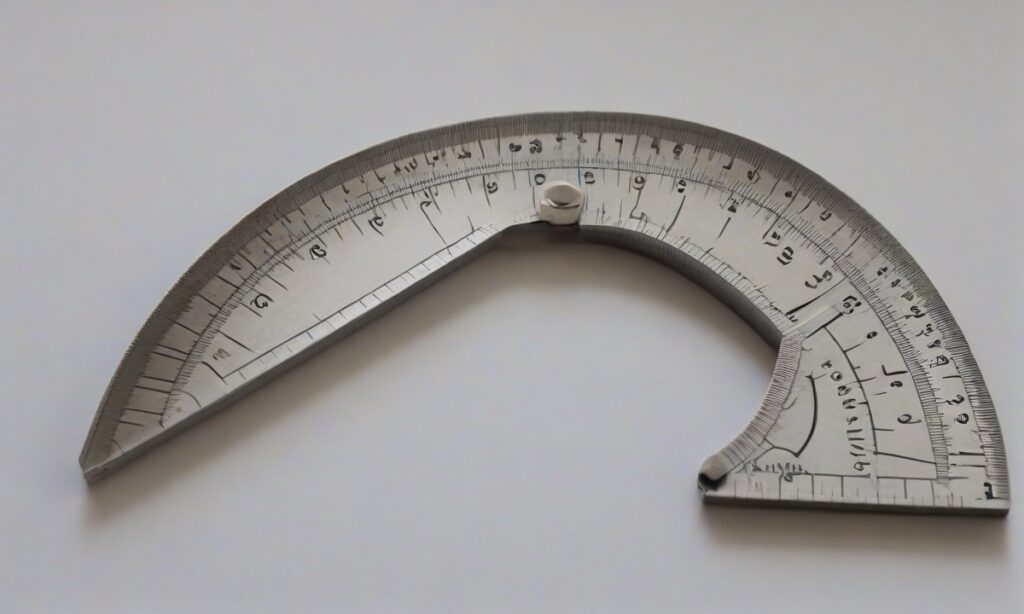Protractor Ruler Guide for Accurate Angle Measurement
2023.12.17 / By admin

Are you struggling to measure angles accurately for your DIY projects or assignments? Don’t worry; we have got you covered. In this guide, we will walk you through the process of using a protractor ruler for precise angle measurement. Understanding the correct techniques for measuring angles is essential, and having a protractor ruler is a tool that can help you achieve it.
A protractor ruler is an angle measuring tool that is easy to use and provides accurate measurements. It is used for measuring and drawing angles and is a must-have tool for professionals, students, or DIY enthusiasts who require precision angle measurement. In this guide, we will introduce you to protractor rulers, explain angle measurement, and provide step-by-step instructions on how to use a protractor ruler for angle measurement accurately.
So, let’s dive in and explore the world of protractor rulers for accurate angle measurement.
Understanding Angle Measurement
Measuring angles accurately is vital in various applications, from construction and engineering to mathematics and science. An angle is the space between two lines that intersect, and it’s measured in degrees.
There are different types of angles, including acute (less than 90 degrees), right (90 degrees), obtuse (between 90 and 180 degrees), and straight (180 degrees). Understanding the types of angles is essential in determining the appropriate tools and techniques required for measuring them.
Precision angle measurement is crucial, as even slight errors in angle measurement can have significant consequences in various industries. To ensure accuracy, it is necessary to use the appropriate angle measuring device and technique.
In the next section, we will introduce you to the various types of protractor rulers available and how to choose the right one for your needs.
Introduction to Protractor Rulers
If you need to measure angles for your projects or tasks, a protractor ruler can be a valuable tool to have on hand. Protractor rulers are versatile tools specifically designed for measuring angles. They come in different types, including angle rulers, protractor angle finders, and angle gauges, each with unique features that cater to specific measurement needs.
Angle rulers are typically used to measure angles in carpentry or construction, while protractor angle finders are suitable for more precise measurements in engineering or scientific applications. Angle gauges, on the other hand, are ideal for measuring small angles and can be used for precision work, such as in jewelry-making or metalworking.
When choosing the right protractor ruler for your needs, consider the type of measurements you’ll be making, the unit of measurement, and the range of angles the tool can measure. Some protractor rulers are designed to measure only 180 degrees, while others can measure full 360 degrees. Others come with additional features such as locking mechanisms and digital displays that can make measurements more accurate and efficient.
By selecting the right protractor ruler and familiarizing yourself with its features, you can ensure precise angle measurements for your projects and tasks.
Using a Protractor Ruler for Angle Measurement
Measuring angles can be a complex process, but with a protractor ruler, it’s easy to achieve precise measurements. Here’s how to get started:
- Place the protractor ruler on the angle to be measured, ensuring that the baseline lines up with one of the angle’s sides.
- Read the measurement value on the ruler where the other side of the angle crosses the protractor’s scale.
- Ensure that the protractor is aligned with the angle’s vertex for accuracy.
- For greater accuracy, use a protractor angle finder or gauge to verify the measurement.
Here are some tips to keep in mind when using a protractor ruler:
- Ensure that the protractor ruler is level and flat on the surface being measured.
- Avoid making accidental scratches or marks on the ruler that could interfere with measurements.
- Use a precision angle measurement device for more challenging angles or applications.
- Practice makes perfect – the more you use a protractor ruler, the more familiar you’ll become with the process.
With these simple steps and tips, you can confidently use a protractor ruler to achieve precise angle measurements for your projects and tasks.
Advanced Techniques for Angle Measurement
Measuring angles accurately can be challenging, especially when you encounter difficult situations. Fortunately, there are additional methods and tools that you can use in conjunction with a protractor ruler to ensure precision in your angle measurements.
Using a Digital Protractor
If you find it challenging to read the markings on a standard protractor ruler, a digital protractor might be a better option. These devices come equipped with an LCD screen that displays the angle measurement with greater precision and clarity. Digital protractors also allow you to lock in an angle measurement, which can be helpful when measuring angles in cramped spaces or awkward positions.
Using a Laser Level
When measuring angles over long distances, a laser level can be a useful tool. Many laser levels have built-in protractors, making it quick and easy to determine the angle of your measurement. Additionally, laser levels can project highly visible lines that help you stay on track when taking complex measurements.
Using a Clinometer
A clinometer is a specialized tool that can measure the angle of inclination or slope. These devices are particularly useful in engineering, surveying, and geology. Clinometers come in various forms, including handheld devices, phone apps, and specialized tools that attach to tripods. By accurately measuring the slope of a surface, you can calculate a wide range of important measurements.
By using these advanced techniques in combination with a protractor ruler, you can measure angles with greater precision in even the most challenging situations. By persisting with practice, you can become a master at measuring angles accurately and quickly, enabling you to succeed in a diverse range of tasks and projects that require precision angle measurement.
Conclusion
By following the techniques outlined in this guide, you can ensure precise angle measurements for any project. Remember, accuracy is crucial when it comes to angles, so take your time and practice using your protractor ruler.
Whether you’re a student, DIY enthusiast, or professional, mastering the art of precision angle measurement can significantly improve your work. With the right tools and techniques, you can achieve accurate measurements for any project, big or small. So, keep practicing, and soon you’ll be a pro at using a protractor ruler to measure angles!
